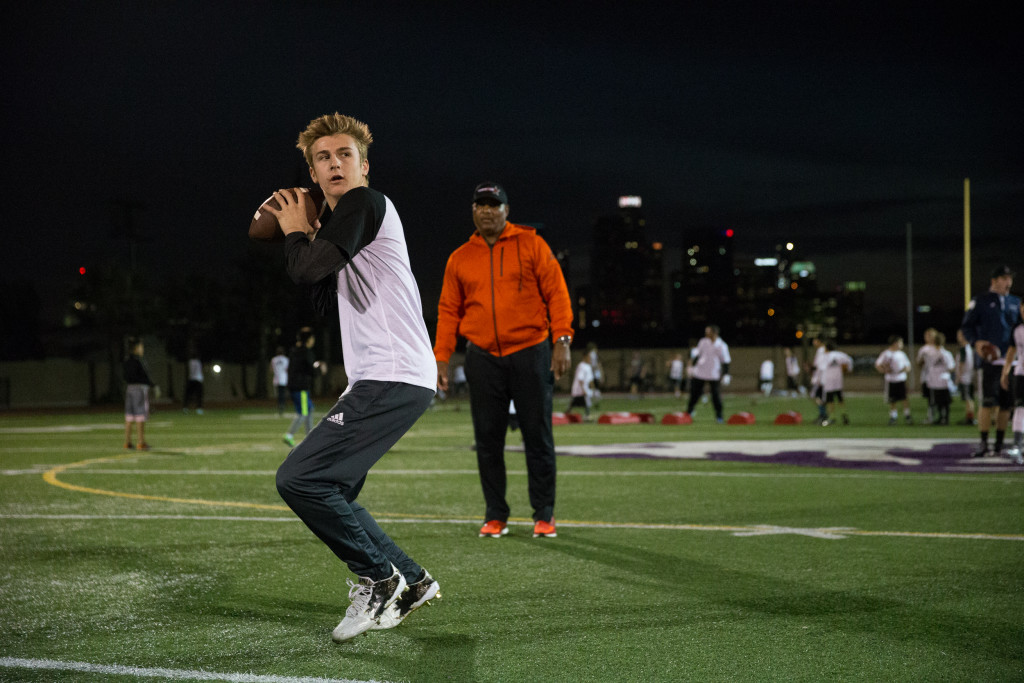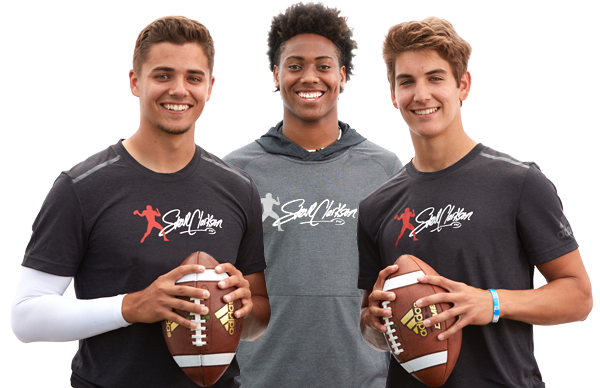QB Training Tips
Having a QB Training Reg Men is Crucial for the development of proper mechanics and good decision making.

When Pressure is coming, you’ll want to keep your eyes downfield and find the open man for a big play, or get the ball out safely. Use these qb tips to learn how to handle a collapsing pocket the Steve Clarkson way.
 The addition of the person chasing the quarterback is to help the quarterbacks get into the mindset of being in a game with an actual defensive player chasing you. When you practice, you can’t get into a full game mindset without having some of the actual pressure from a real game involved in your practice. In part two of this qb drill you can see the pressure gets the quarterback to move faster than when they were only against themselves. Without the pressure Steve Clarkson had applied in the drill, the quarterback did not react with the game time mindset.
A quarterback needs to keep their movements tight and be able to maneuver quickly. Keeping the cuts tight is very important in succeeding in this drill as well as in a game. If you don’t have precise, sharp movements you are putting yourself at a greater risk for running into a defender or getting tackled. When the second player was included in the drill you see how the fast movements were necessary or else they were going to get tackled if contact was allowed in the drill. It also shows how practicing the footwork patterns with the drill can help a QB to shake a defender who’s right on you. If the quarterbacks ran straight to the left to rather than running the route to avoid the collapsing pocket, they would have been tackled rather quickly. Shaking the defensive pressure is necessary or else a collapsing pocket will collapse on you as well.
When the pocket collapses the real pressure is on for a quarterback. There are the great quarterbacks who can make the play and average ones that collapse with the pocket. Knowing how to move and think during a collapsing pocket will allow you to make a play that very few would be able to do. To learn about how to evade threats in a collapsing pocket or to sign up for a qb camp and/or private coaching, contact Steve now!
The addition of the person chasing the quarterback is to help the quarterbacks get into the mindset of being in a game with an actual defensive player chasing you. When you practice, you can’t get into a full game mindset without having some of the actual pressure from a real game involved in your practice. In part two of this qb drill you can see the pressure gets the quarterback to move faster than when they were only against themselves. Without the pressure Steve Clarkson had applied in the drill, the quarterback did not react with the game time mindset.
A quarterback needs to keep their movements tight and be able to maneuver quickly. Keeping the cuts tight is very important in succeeding in this drill as well as in a game. If you don’t have precise, sharp movements you are putting yourself at a greater risk for running into a defender or getting tackled. When the second player was included in the drill you see how the fast movements were necessary or else they were going to get tackled if contact was allowed in the drill. It also shows how practicing the footwork patterns with the drill can help a QB to shake a defender who’s right on you. If the quarterbacks ran straight to the left to rather than running the route to avoid the collapsing pocket, they would have been tackled rather quickly. Shaking the defensive pressure is necessary or else a collapsing pocket will collapse on you as well.
When the pocket collapses the real pressure is on for a quarterback. There are the great quarterbacks who can make the play and average ones that collapse with the pocket. Knowing how to move and think during a collapsing pocket will allow you to make a play that very few would be able to do. To learn about how to evade threats in a collapsing pocket or to sign up for a qb camp and/or private coaching, contact Steve now! 
